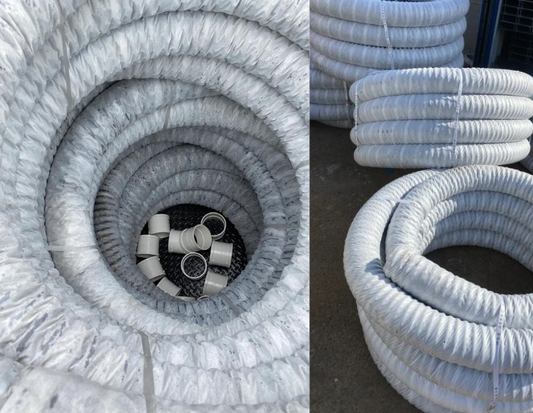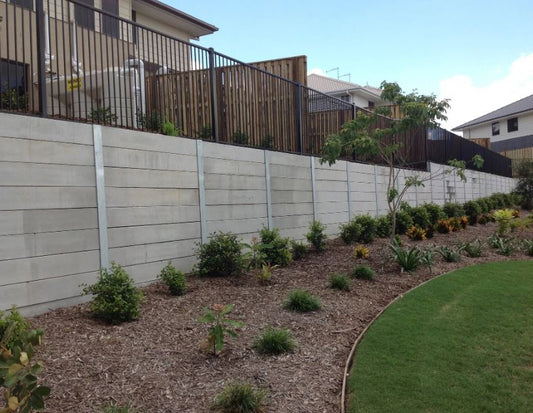Whether you're designing a large-scale landscape or a small backyard escape, sleepers are crucial for creating stable foundation systems that support thriving gardens.
Sleepers are incredibly versatile garden materials due to their strength and durability, and they have gained popularity among homeowners, passionate gardeners, and professional landscapers. They can be used in various creative ways across the garden, from landscaping and design to making garden furniture and feature pieces.
With their ability to provide structure, definition, and longevity to outdoor spaces, sleepers elevate gardens into lush havens of beauty and tranquility.
Let's celebrate the humble yet significant contributions of sleepers by exploring their diverse uses that enhance every gardener's creative vision.
Concrete Sleepers for Gardening How it helps
1. Pathway Sleepers
Sleepers play a significant role in creating pathways and guiding the layout of gardens with elegance. Their smooth, interlocking surfaces make walking stress-free while efficiently managing traffic flows. When placed closely together, sleepers form neat walkways that clearly separate them from planting areas.
Whether designed to be curved or straight, sleepers help stabilize loose soils, preventing messy situations and tripping hazards. Additionally, their resistance to fungal and insect damage means they don't need frequent replacement like other options do. This ensures safe journeys through flourishing plant life for many years.
Maintaining sleeper pathways is simple with occasional sweeping and jet washing required. While some lawn maintenance around the pathway is necessary, there are notably fewer weeds compared to traditional brick or block paving paths.
For a modern look, you can eliminate the grass and lay down a weed membrane underneath the sleepers surrounded by pebbles or shingles according to your preference.
2. Garden Edging Sleepers
Establishing crisp boundaries and defining conceptual spaces with sleepers adds a polished and pristine appeal to the garden. By containing soil effectively, they prevent root encroachments, maintaining carefully planned layouts.
Sleepers can be used as low walls to delineate specific areas like meditation zones or children's play areas, or laid flat to separate plants according to their needs for sunlight and water.
With their versatility, sleepers enhance the hardscaped definition of any landscape. For a distinctive look, vertical edging using sleepers creates an impressive textured finish that can be further accentuated by adding LED lighting for a stunning effect both day and night.
3. Raised Bed Sleepers
By positioning sleepers at an angle to create open containers filled with soil that is rich in nutrients, gardening becomes achievable for everyone. These elevated plant beds prevent backaches from weeding and harvesting at ground level while enhancing poor soils that hinder root growth.
Moreover, the weather-resistant nature of sleepers provides better protection against heat and frost compared to other materials prone to cracking under pressure.
Elevated beds are known for heating up faster than ground-level ones, resulting in improved vegetable growth. Additionally, they make it easier to confine growing vegetables that might otherwise spread into other parts of the garden. It's also simple to attach nets and covers onto a raised bed structure as a barrier against pests. Most importantly, raised sleeper beds have a clean and orderly appearance.
With lush produce spilling over the edges attractively supported by sleepers, even small plots can turn into abundant kitchen gardens nourishing both body and soul. Their accessibility allows people of all ages and physical abilities – whether fit or having limited mobility –to enjoy cherished hobbies like gardening.
4. Retaining Walls
Sleepers, due to their density and form, are an excellent choice for constructing a retaining wall. This provides DIY enthusiasts with an appealing and cost-effective alternative to concrete or brick.
The versatility of using sleepers allows for creating various heights in different areas, especially beneficial for gardens on slopes or when looking to add more dimension to outdoor spaces. They are also suitable for split-level gardens and can be used to create eye-catching finishes for raised patios, decks, or grass verges.
When arranged horizontally, sleepers can build a straight wall; alternatively, when positioned vertically, they enable the construction of curved walls that complement the garden's contours.
5. Outdoor Play Area
It's essential for children to have the opportunity to play outdoors as they develop. Unfortunately, the garden may not be suitable for year-round outdoor activities. Running and playing during rainy seasons can lead to a muddy lawn that requires significant care in the summer. Using sleepers is an excellent way to create a mud-free outdoor play area for kids throughout the year.
By partitioning off part of your garden, clearing it of vegetation, and building a small sleeper wall around the perimeter, you can achieve this goal.
After laying down the weed membrane and filling it with bark just below the top of the sleeper, all their favorite outdoor equipment such as swings and slides can be placed within this area without damaging other parts of your yard.
For those who are more ambitious, installing artificial grass could also be considered by preparing and planning meticulously for lasting results.
6. Sandpits
A DIY sandbox is a classic and enjoyable outdoor play feature that allows kids to express their creativity, construct castles and structures, and enhance cognitive and motor skills. Moreover, it's an excellent project for parents who enjoy do-it-yourself activities.
The benefit of constructing your own sandbox is the ability to customize it completely to suit your outdoor area. You can select the size, shape, and placement within the garden.
Personalize it with your children’s preferred colors and consider adding a removable lid for when the sandbox isn't in use. It’s important to ensure that the ground is solid, leveled and well-drained before installation. Try placing it in an area with partial shade so that the sand can dry while providing sun protection for your little ones.
Cut sleepers to appropriate sizes and secure them together using bolts. Remember to lay down weed fabric before filling it with sand.
7. Pond
A pond can bring a calming and lavish atmosphere to any outdoor area. It offers great support for the natural ecosystem of your garden, attracting wildlife like frogs, pond skaters, dragonflies, birds, and insects.
Constructing a pond with sleepers is relatively simple and suitable for ponds of various sizes. Start by building the sleeper frame to your desired dimensions, then line it with a pond liner and secure it in place. Finally, add another layer of sleepers to encase the pond liner for a polished look.
It's important to note that Tropical Hardwood and Oak sleepers are best suited for areas exposed to higher moisture levels.
In Conclusion
From simple origins to creating inspiring havens, sleepers lay the groundwork for flourishing gardens. Their modest qualities endure all seasons, nurturing cherished outdoor spaces meant to be enjoyed for years. Where sleepers are placed, gardens have the space they need to thrive and bloom gracefully.




